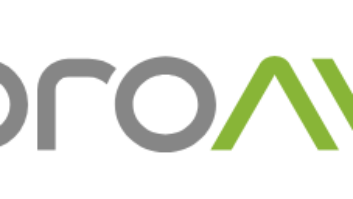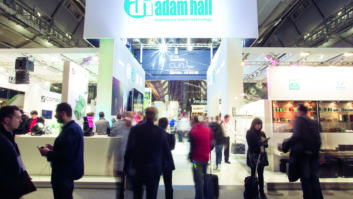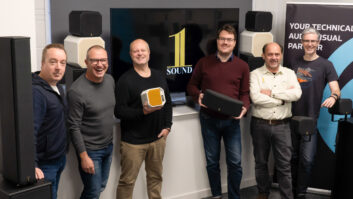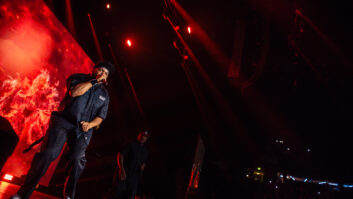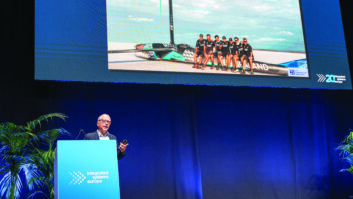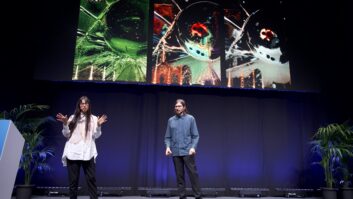THE NATIONAL Concert Hall (NCH) in Dublin, which serves as the principal venue for classical music concerts in Ireland, is one of countless venues that have had to look again at their radio microphone systems recently.
For years, radio microphone systems have gifted performance venues, broadcasting studios, and concerts with high-quality, flexible sound capture using the 790-862MHz frequency band to operate wireless microphones.
But the much relied-upon band has been destined for change ever since the RF spectrum sell-off was proposed in 2004. Back then, mic manufacturers were conscious that any modification to frequency band allocations would threaten the operation of their systems.
Tuomo Tolonen, application and production planning manager at Shure UK, reveals: “We sat down and said, we have a lot to lose here because a lot of our wireless equipment is used on a daily and nightly basis on some of the highest-profile events in the world; we knew we had to do something groundbreaking.”
The relinquishing of the 790-862MHz band to mobile phone network providers is now under way following Ireland’s spectrum auction, which took place in November 2012. Hutchison 3G Ireland, Meteor, Telefónica and Vodafone all won lots in this band, and indicated that they intended to move quickly to introduce 4G services.
Ultimately, for venues like the NCH, the new radio frequency laws will mean any system that operates within 790-862MHz will not only be subject to interference from 4G mobile data but will also be illegal.
@page_break@
Roadshow Visit (pictured: new portable Shure Axient reciever)
The NCH’s chief electrician and technical manager, Paul Kohlmann, first became aware of the impending ramifications of the spectrum changes when Shure UK ran its Wireless Roadshow in Dublin in October 2011.
The show was devised to inform technical teams at performance venues around Ireland about how the spectrum sell-off would affect them and what could be done about the band reallocation. It also gave Shure the opportunity to showcase its new Axient radio microphone system, which began development following the 2004 spectrum announcement.
“I’d initially gone [to the roadshow] because I knew the spectrum change was coming down the road,” says Kohlmann. “I went there to find out what was going on and what was happening down the line, and to get a feel for the market and for Shure.”
Changing landscapes
Beyond the planned changes to the RF spectrum, there are other reasons why the NCH required a new radio mic solution.
“We’ve been upgrading our infrastructure over the years and trying to keep high levels of industry-standard equipment. There’s a lot more performance venues in Dublin now and we’ve got to stay ahead of the competition – especially as we’re such a prestigious venue,” says Kohlmann.
The building itself was once used to educate rather than entertain, having been the home of the University College Dublin for over half a century until the institution was relocated in the 1960s. This paved the way for the country’s national concert hall to be installed at the site – opening some years after in 1981. Now the NCH plays host to 500 shows a year and provides residence for the RTE National Symphony Orchestra.
Having made itself at home in the venue, rather than having a home built-for-purpose, the NCH’s use of space is continuing to evolve. At the moment, there are four performance spaces in use: located just beyond the foyer is the main auditorium which seats 1,200; adjacent to this is the John Field room with space for 450 standing or 250 seated; upstairs, the Carolan Room permits 110 to stand or 100 theatre style; while the Upper Balcony has space for 200 standing or 90-100 cabaret style. In recent years the addition of the Kevin Barry Room with seating for 100 people has proved popular for classical recitals, jazz, contemporary music and lectures.
But there is significant expansion potential. Blank canvasses of rooms (one of which could give the main auditorium a run for its money) wait for their silences to be displaced by music and claps of admiration. Plans to renovate these spaces are already in place as the NCH looks to diversify its programming with more contemporary and mainstream productions. Therefore, as Kohlmann tells me, the new radio microphone system will eventually need to expand into the unused areas.
As luck might have it, a different meeting with Shure that came to be relevant to the NCH took place at the 2012 NAMM Show in California. Patrick O’Brien, managing director at Dublin-based integrator Audio International met with Tolonen and was introduced to the Axient system.
The integrator – which has supplied the hall with AV equipment over a 30-year period – then won the tender to supply and install the new microphone system at the NCH. The Shure team subsequently visited the NCH – which sits just off the city’s public park, St Stephen’s Green – in spring 2012.
Kohlmann and his team had little interest in simply replacing the venue’s Shure UHF-R radio mic system with another from the same series. They wanted to upgrade to a solution that could handle the challenges of an uncertain RF spectral future.
“The NCH needed a system that could be integrated within the hall so that everything could work independently and then if need be – if there was a huge production here – they could bring everything back to one position and they could have a huge system,” explains Tom O’Brien of Audio International.
Kohlmann adds: “Part of our packages here is that our performers and promoters get a complete turnkey solution when they perform so they don’t have to go off hiring equipment; it’s all in house and there’s no extra charges as it’s all included in the booking fee.”
He also tells me that because the venue runs shows simultaneously, the new system needed to handle potential interference.
According to Tolonen, the reality is that the spectrum will be further congested in the years ahead. The possibility of interference from unlicensed radio devices – such as white space devices (a not yet fully defined piece of technology that may pose problems for radio frequencies in the near future, he explains) – and the changing mobile frequency bands only added to the need for high performance from the NCH’s new radio mic system.
@page_break@
Monitoring the future (pictured: Paul Kohlmann with rechargable batteries)
A Shure Axient radio microphone system was installed at the NCH in the latter part of 2012. The system is designed to operate alongside Shure’s UHF-R system, with six Axient channels supplemented by 10 of UHF-R. This can be expanded to 28 wireless channels when the entire system – which also includes Shure’s digital wireless microphone ULX-D system and in-ear personal monitoring PSM1000 system – is pulled together.
“We didn’t develop Axient to be a stand-alone system because UHF-R has become an industry standard for systems in high-performance venues,” explains Tolonen. “With the amount of UHF-R out there, you have to be able to blend the systems and supplement Axient with UHF-R.”
The Axient portion of the system incorporates three AXT400 dual-channel receivers, six AXT100 bodypacks, and six AXT200 handhelds with KSM9 capsules. Meanwhile, a Spectrum Manager (AXT600) controls all frequency assignments and monitors on-air as well as back-up frequencies.
One of the unique features of the system is its ability to provide a real-time control link between transmitters and their respective receivers. This is made possible by the use of five Access Points (AXT610 ShowLink) dotted around the NCH, which give Kohlmann and his team the ability to access any of the transmitters’ parameters– even when the artists are, say, being mic’d up in the dressing room. For instance, they can monitor which mics are on, adjust audio gain settings or frequencies, check battery life and even whether the mic’s transmitter is locked or not. “This takes any guesswork out of pre-performance checks,” says Kohlmann.
Probably the most crucial parameter the team can access is frequency. “The Spectrum Manager continuously monitors the RF environment and, should it detect interference, the transmitter and receiver will simultaneously change frequency and the show can carry on without a problem,” clarifies Tolonen. “This change is instantaneous, only taking milliseconds.”
The entire system is networked so that Kohlmann or one of his technicians can monitor frequency channels, back-up channels and even channels occupied by non-Shure devices. These can be monitored from FOH or remotely from laptops that use the manufacturer’s Workbench software.
In addition, because the system is so well connected, the technical team at the NCH can co-ordinate any guest systems that come into the venue.
“The system would just regard it is part of the master system,” says Tolonen. “It co-ordinates X number of guest systems to be compliant with the master system without affecting the frequency settings already in place. They just literally hit a button, it finds new frequencies, they hit another button to deploy them to the network and their system would flash lights and they’d be ready to go.”
Previously the NCH used AA batteries to run the multiple radio mics, often leading to a large amount of unnecessary waste when batteries were thrown out with charge left in them. Axient solves this issue by incorporating rechargeable battery packs.
The NCH’s energy officer was initially sceptical about the new radio mic system, comments O’Brien. “But when he was told what it does and what it was going to save in terms of batteries and throwing them away, it was a huge factor [in selecting the Axient system].”
“I was dubious about the rechargeable batteries because we’ve tried so many things over the years,” concedes Kohlmann. “But the recharging system is brilliant – it’s so quick, it’s so accurate. You know you can change a battery in two seconds.”
The three remote battery-charging racks are on the network, enabling the technical team to check battery charge times. Life of battery packs is displayed in hours and minutes rather than with bars, so the team can easily locate the nearest fully charged battery pack when one is needed.
Another specification of the new system was the need to provide some rooms in the venue with radio microphone use on an ad hoc basis. For instance, the foot of the staircase in the John Field Room is sometimes dressed with a stage for more intimate performances. To ensure radio mics were available just about anywhere in the venue, Audio International constructed three mobile racks which can be transported around the venue. These consist of two ULXD4D dual-channel receivers, an AXT900 charging station for the ULX-D’s SB900 cells, four ULXD1 bodypacks and four ULXD2/SM58 handhelds.
The modular make-up of the system will eventually enable the NCH?technical team to expand the Axient system into the unused spaces that will one day become performance areas.
Let’s hope the spectrum allocated to radio mics doesn’t shrink much more in years to come; performance venues like the NCH deserve the RF?limelight just as much as mobile phone network providers. n
www.axient.net
www.audiointernational.net
www.nch.ie
www.shure.co.uk
